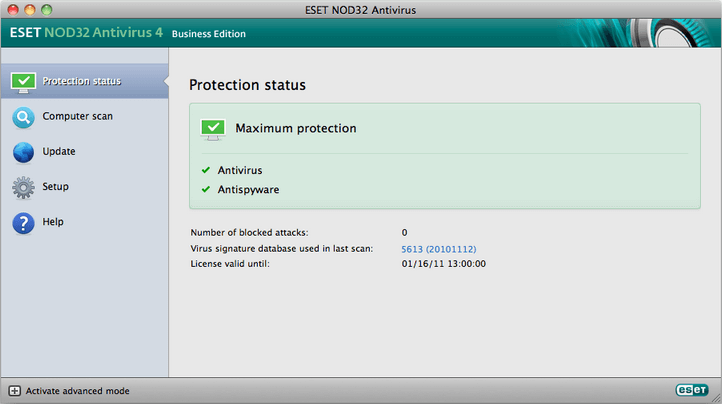Eset Nod32 Antivirus 4 Business Edition For Mac
Mac OS X computers will automatically change their name depending on the network they are on, or to resolve naming conflicts. This means that if a Mac OS X client has a dynamically assigned IP address or comes and goes from multiple networks, the client's name will be different each time that it joins a network. This causes a problem when clients report in to ESET Remote Administrator because a new client entry is created in ESET Remote Administrator and the old name becomes a stale record. To prevent a Mac OS X client from having its name changed dynamically, you will have to edit the hostconfig file. The full path to this file on a Mac is: /etc/hostconfig.

Editing this file requires administrative rights. The easiest way to resolve this issue is to use a Terminal-based text editor like vi or pico to set a static hostname for the device. In the example below we explain how to use pico to edit the file. Individual computers will have differently configured hostconfig files which may not resemble Figure 1-2 exactly. Use the arrow keys to move your cursor to the last line of text, and then press Return to create a new line and enter the HOSTNAME= command.
Figure 1-2. Press Ctrl + X to initiate an exit, and then press Y to save changes. When prompted to enter a filename, leave the default filename unchanged, and then press Return. Figure 1-3. Restart your computer for the changes to take effect.
Download Install Nod32 Antivirus
Your computer will now have a static hostname and will only report in to ESET Remote Administrator using that hostname. The hostname will not change unless the /etc/hostconfig file is edited manually again.